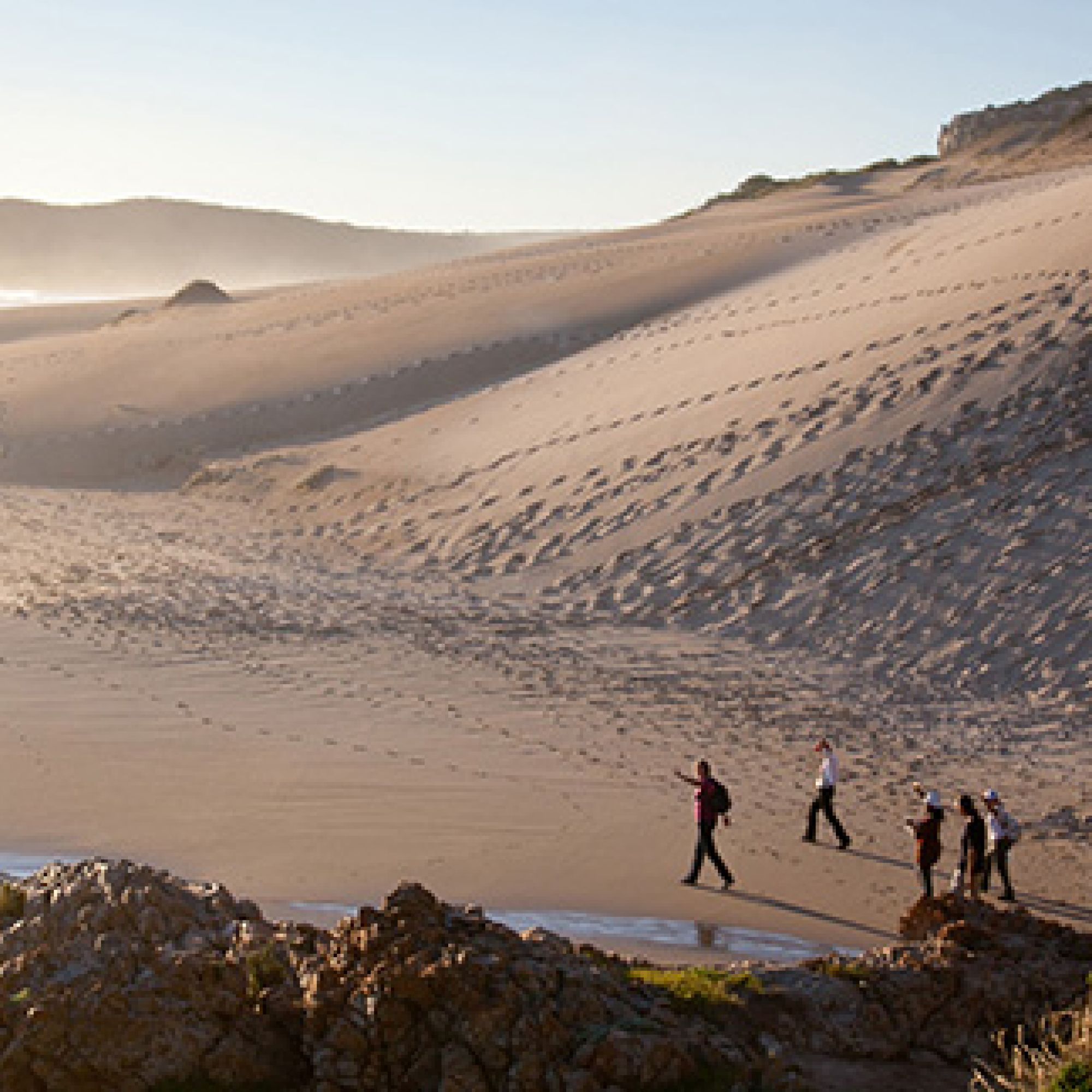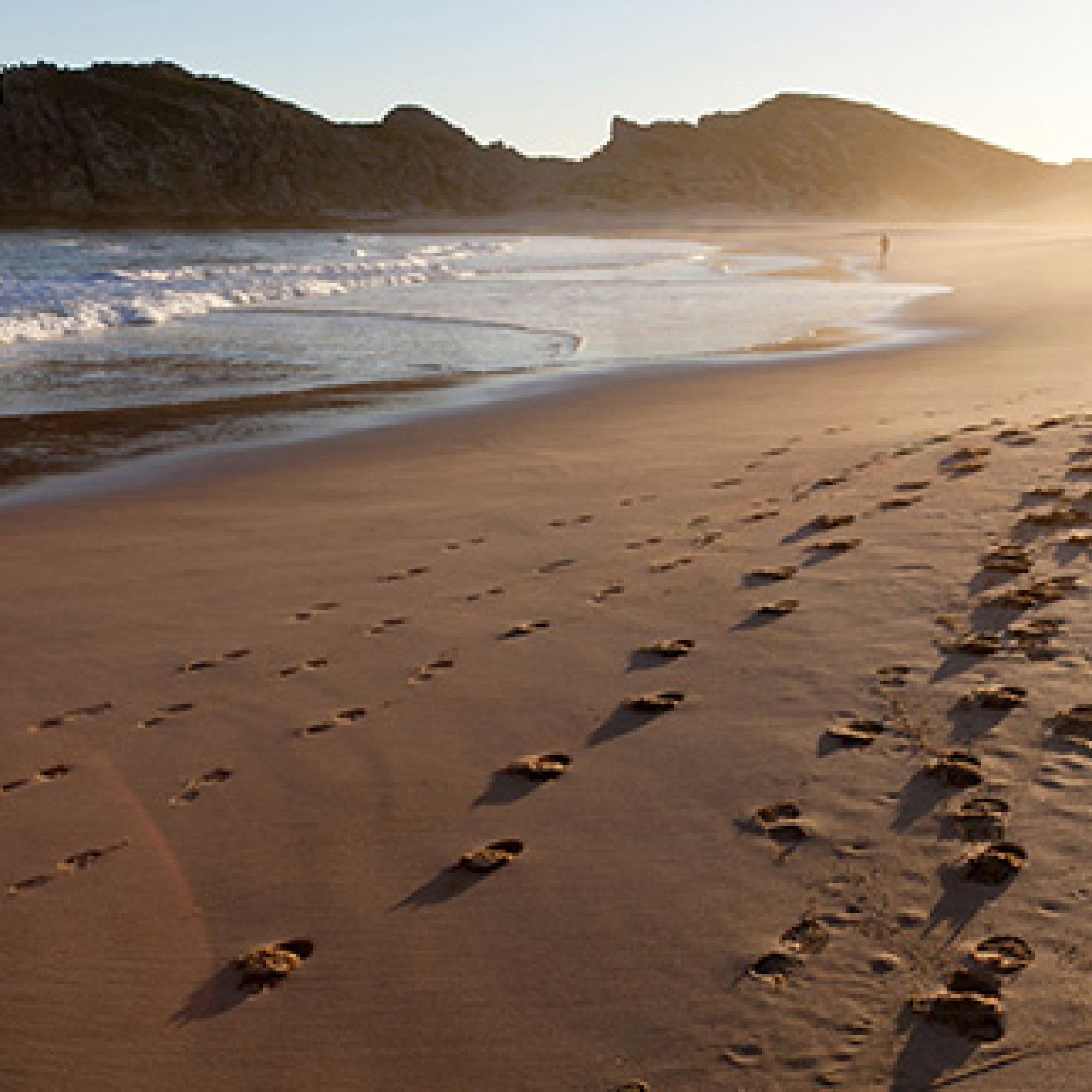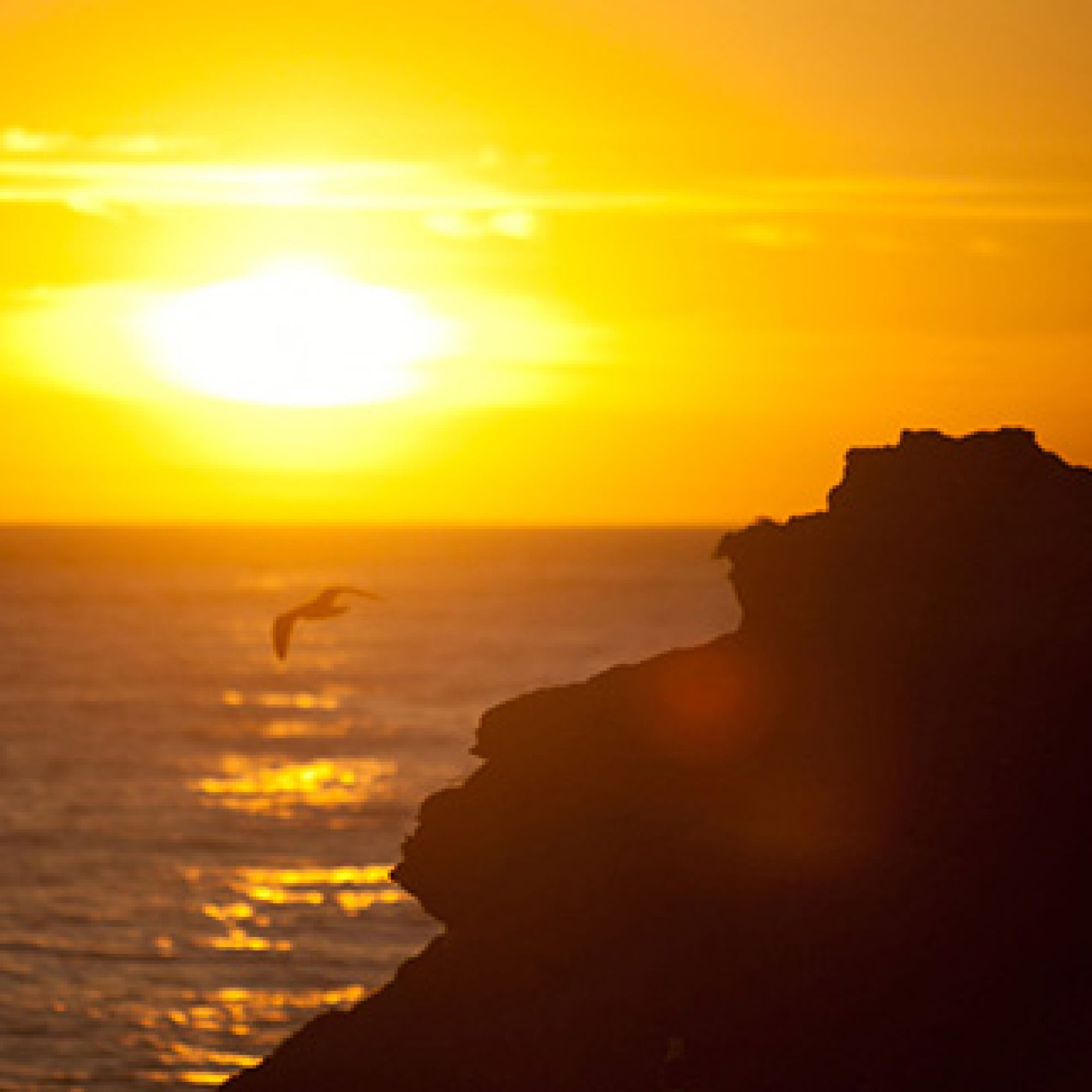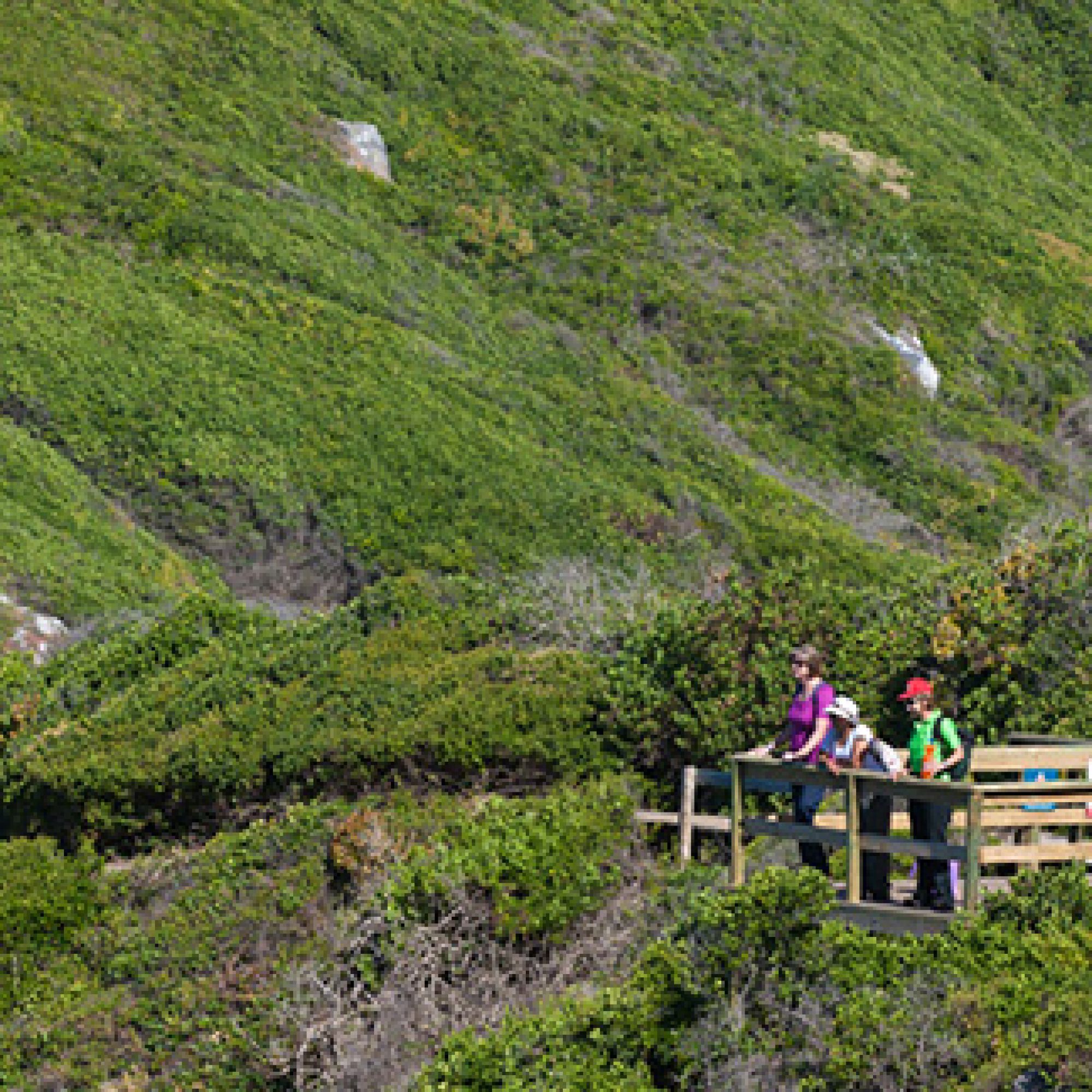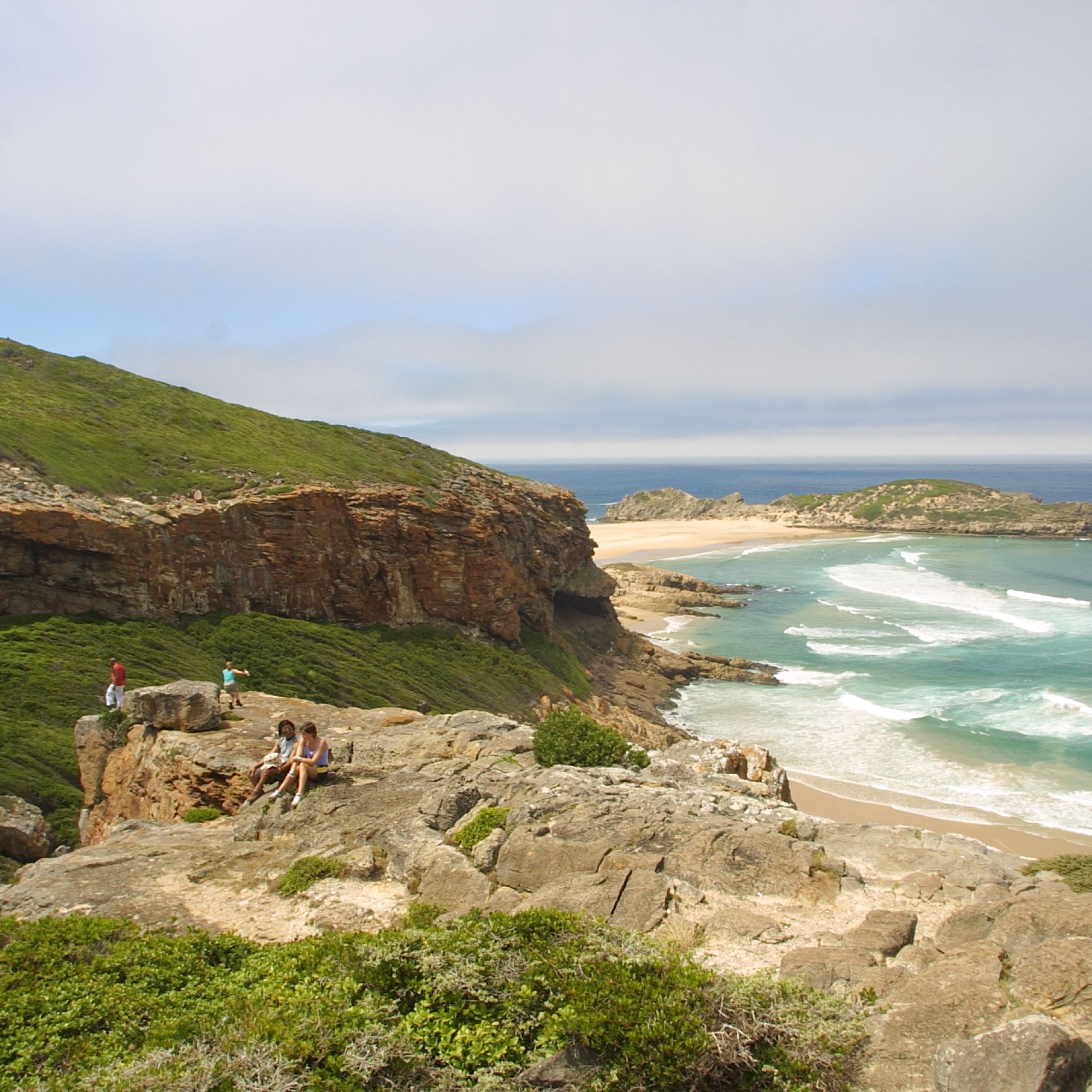Robberg Nature Reserve Conservation
The Robberg Peninsula is conserved for several reasons. The mainland connects to an island through a spit called a tombolo. This results from waves sweeping around both sides of the island. Similar to other rocky headlands on this coastline, Robberg Peninsula supports a diverse array of plants and animals that have adapted to this land/sea ecology.
But what sets it apart is the distinctive climbing-falling dune (one of only seven on this coastline). The bedrock of the peninsula was dated to the prehistoric breaking up of Gondwanaland and evidence of this can be seen at several sites. Besides the unique and fascinating typography, evidence of middle and later Stone Age inhabitation was found in a few of the caves. It is for this reason that the reserve was proclaimed a national monument. The rare blue duiker (the smallest antelope in the Western Cape) and the vulnerable sex-changing roman fish are just two of the species that find sanctuary in this marine reserve.

